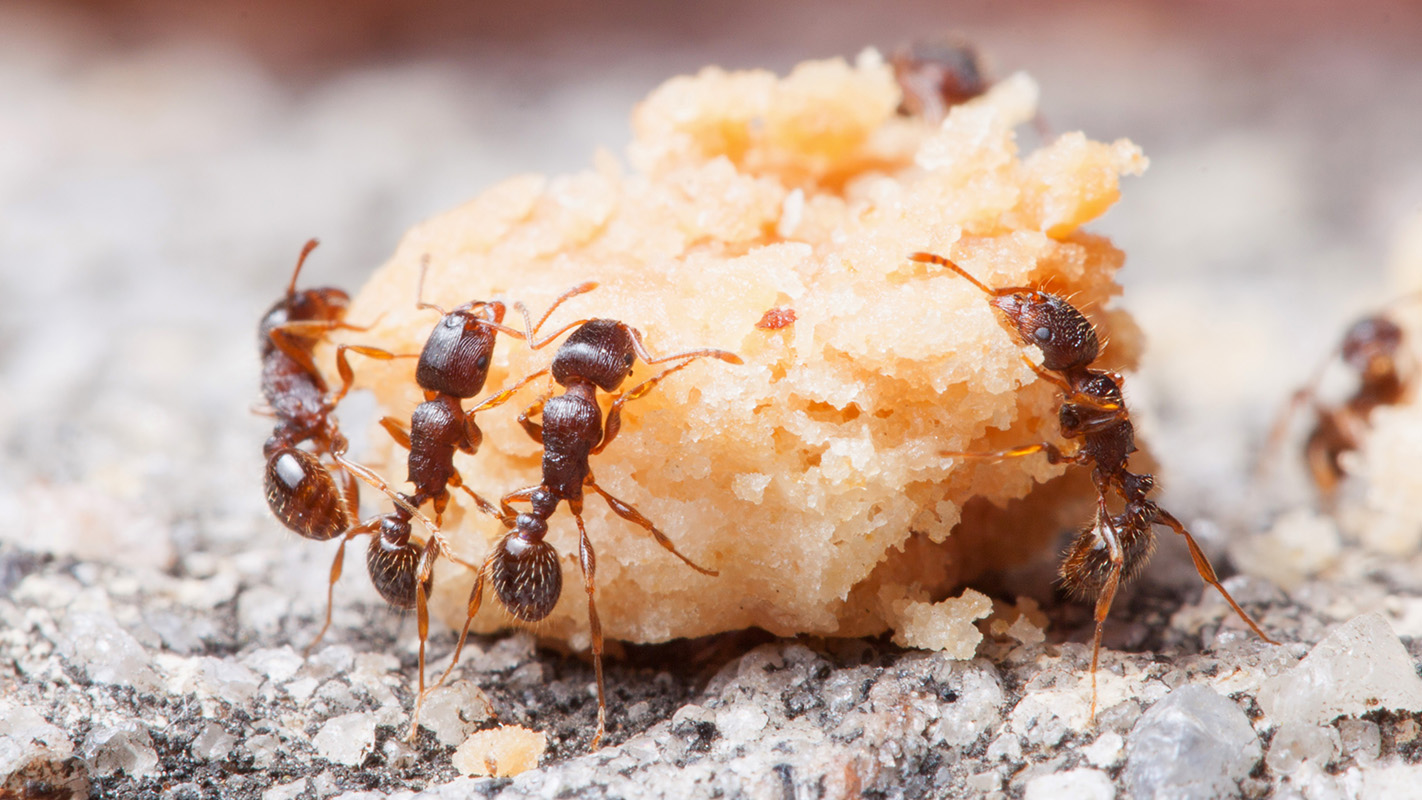Isotope Study Shows Which Urban Ants Love Junk Food

For Immediate Release
Research from North Carolina State University finds that some – but not all – of the ant species on the streets of Manhattan have developed a taste for human food, offering insight into why certain ants are thriving in urban environments. The findings stem from a study that tested isotope levels in New York City ants to determine the makeup of their diet.
“We wanted to learn more about why some ant species are able to live alongside us, on sidewalks or in buildings, while other species stay on the outskirts of human development,” says Dr. Clint Penick, lead author of a paper on the work and a postdoctoral researcher at NC State. “This could also help us determine which species are doing the most to clean up our trash.”

The researchers collected more than 100 ant samples, representing 21 species, at dozens of sites on sidewalks, street medians and parks in Manhattan. The ant samples were then analyzed to determine the isotope content of their bodies. Also used for carbon dating, isotopes are variations of the same element that have differing numbers of neutrons.
Animals, including humans, incorporate the carbon in their food into their bodies. One type of carbon, called carbon-13, is associated with grasses, such as corn and sugar cane. Because corn and refined sugar are present in everything from hamburgers (corn-fed beef) to processed foods, ants that eat a lot of human food have higher levels of carbon-13 than ants that avoid human food.
The researchers found that the most common ant species on sidewalks and medians, the pavement ant (Tetramorium Sp. E), had the highest levels of carbon-13. And, in general, the species found in medians had higher carbon-13 levels than those species found in parks. The ants living in closest contact with humans, Penick says, look more like us in terms of their isotope content.
“Human foods clearly make up a significant portion of the diet in urban species,” he says. “These are the ants eating our garbage, and this may explain why pavement ants are able to achieve such large populations in cities.”
There is, however, an exception to the urban ant trend of eating people food.
An ant species called Lasius cf. emarginatus – only found in NYC within the past five years – is thriving on Manhattan’s medians, and is one of the few species other than the pavement ants to be found in high numbers on the city’s sidewalks. But Penick’s isotope analysis found that L. emarginatus has no preference for human food.
Instead, L. emarginatus appears to split its time between subterranean nests and foraging in the branches of trees along NYC streets.
“This highlights the complex nature of urban ecosystems and how much we still have to learn about how these species relate to each other and to the environment,” Penick says.
The paper, “Stable isotopes reveal links between human food inputs and urban ant diets,” is published online in the journal Proceedings of the Royal Society B. The paper was co-authored by Dr. Amy Savage, a postdoctoral researcher at NC State, and Dr. Rob Dunn, an associate professor of biological sciences at NC State. The work was supported by the National Science Foundation under grant number 0953390 and by the Department of the Interior’s Southeast Climate Science Center under cooperative agreement number G13AC00407. The center is based at NC State and provides scientific information to help land managers respond effectively to climate change.
-shipman-
Note to Editors: The study abstract follows.
“Stable isotopes reveal links between human food inputs and urban ant diets”
Authors: Clint A. Penick, Amy M. Savage, and Robert R. Dunn, North Carolina State University
Published: April 1, Proceedings of the Royal Society B
Abstract: The amount of energy consumed within an average city block is an order of magnitude higher than that consumed in any other ecosystem over a similar area. This is driven by human food inputs, but the consequence of these resources for urban animal populations is poorly understood. We investigated the role of human foods in ant diets across an urbanization gradient in Manhattan using carbon and nitrogen stable isotopes. We found that some–but not all–ant species living in Manhattan’s most urbanized habitats had δ13C signatures associated with processed human foods. In particular, pavement ants (Tetramorium sp. E) had increased levels of δ13C similar to δ13C levels in human fast foods. The magnitude of this effect was positively correlated with urbanization. In contrast, we detected no differences in δ15N, suggesting Tetramorium feeds at the same trophic level despite shifting to human foods. This pattern persisted across the broader ant community; species in traffic islands used human resources more than park species. Our results demonstrate that the degree urban ants exploit human resources changes across the city and among species, and this variation could play a key role in community structure and ecosystem processes where human and animal food webs intersect.
- Categories:


